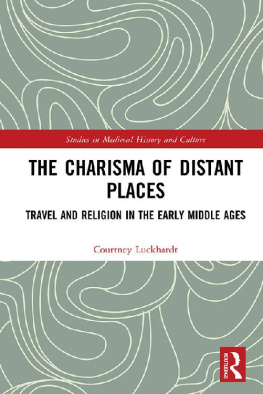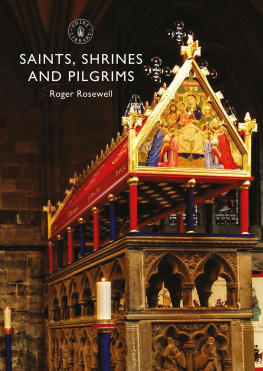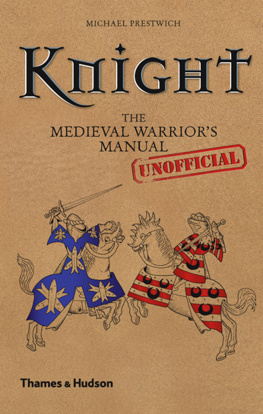2016 by the University of New Mexico Press
All rights reserved. Published 2016
Printed in the United States of America
21 20 19 18 17 16 1 2 3 4 5 6
The Library of Congress has cataloged the printed edition as follows:
Patterson, Sara M., 1974
Middle of nowhere : religion, art, and pop culture at Salvation Mountain / Sara M. Patterson.
pages cm
Includes bibliographical references and index.
ISBN 978-0-8263-5630-7 (pbk. : alk. paper) ISBN 978-0-8263-5631-4 (electronic)
1. Knight, Leonard, 19312014. 2. Outsider artistsUnited StatesBiography. 3. Outsider artCaliforniaSalton Sea Area. 4. Installations (Art)CaliforniaSalton Sea Area. 5. Christian art and symbolism. I. Title.
N6537.K618P38 2016
700.92dc23
[B]
2015014396
Cover photo courtesy of the author.
Designed by Lila Sanchez
Acknowledgments
It was my father who first taught me to be a place-ist. At a family cabin in the Big Thompson Canyon, a cabin built by my great-great-grandparents, who passed it down to their daughter, my great-grandmother, my father told me stories that communicated the importance of that place to me. Through stories about the cabin, he told me that that place made us who we were. He showed me that the landscape itself was part of the constellation of symbols that made us a family.
Ever since then Ive been fascinated by place and the way that it affects human communities and relationships. This is, no doubt, part of what drew me to Salvation Mountain and brought me back there again and again. It wasnt just the place, though. It was the community that surrounded the place and told its stories. For many visitors, Salvation Mountain has become one of the landscapes that makes their lives meaningful and part of the symbol system that makes them who they are. Salvation Mountain made Leonard Knights life meaning-full, but it also touched and was touched by thousands of other hands. It was at Salvation Mountain that I was challenged once again to ask questions about place and the role it plays in human lives.
During my time at Salvation Mountain, I was helped by more people than I can name. Each time he saw me, Leonard Knight welcomed me into his home, as he did with every person who showed up at Salvation Mountain. Knight was confident that God had sent me to get the word out about Salvation Mountain, and freely shared his techniques, his life stories, and his time with me. For that, I am forever grateful. I am only sorry that he didnt live to see this book come out. I will never know what he imagined when he imagined my book, but I hope he would be glad about its arrival.
Other folks at Salvation Mountain were particularly helpful. Kevin Eubank, who died suddenly in 2011, allowed me to interview him, prepared meals for both Leonard and me, and helped me connect to other individuals who might assist me. Mike Phippen also enabled me to better understand Salvation Mountain and the community that surrounds it. Countless others allowed me to interview them at the mountain and/or sent me accounts of their experiences there. This book represents the accumulation of all of these helpful hands and shared stories.
As I worked on my manuscript, I was lucky to call Hanover College in Hanover, Indiana, my intellectual and communal home. At the library, Patricia Lawrence helped me order the necessary materials for my research and was a wonderful support along the way. The Faculty Development Committee financially supported research trips to Salvation Mountain. A scholarship support group was an important source of encouragement for methank you Jared Bates, Dominique Battles, Paul Battles, James Buckwalter-Arias, Krista E. Hughes, Mandy Wu, Xialong Wu, Mi Yung Yoon, and Fernanda Zullo. Dave Cassel, Mike Duffy, Veronica Patterson, Robyn Ryle, Kay Stokes, and Karla Van Zee generously read portions of the manuscript and offered important feedback. Departmental support for my writing came from Dave Cassel, Mike Duffy, Krista E. Hughes, and David Yeager. Finally, I appreciate the support offered by Steve Jobe as the dean of Academic Affairs.
My thanks go to the people at the University of New Mexico Press, particularly Clark Whitehorn and Karin Kaufman, for their help in preparing the text for publication.
I was also the beneficiary of so many lively and challenging conversations about my work. As a recipient of a Luce Fellowship from the Society for the Arts in Religious and Theological Studies (SARTS), I presented my research to group members who helped me think through several issues related to Salvation Mountain as a piece of religious art. Other conversations, particularly with Amy Hoyt, Kate Johnson, Sara Moslener, Jennifer Naccarelli, Quincy Newell, Katie Oxx, and Karla Van Zee, helped refine my thinking about several of the themes explored herein.
Without the support of my various communities throughout this process, I would never have finished this text. My friends Leticia Bajuyo, Sharon Benton, Dave Cassel, Mike Duffy, Joyce Flanagan, Krista E. Hughes, Amir Hussain, Terry Jobe, Kate Johnson, Jamie Kepros, Mridula Mascarenhas, Jennifer Naccarelli, Quincy Newell, Zephirin Ryan, Robyn Ryle, David A. Sanchez, Nasrin Shahinpoor, Steve Steiner, Kay Stokes, Ruth Turner, and Karla Van Zee offered me important relationships and conversations throughout the process. Thank you. My teachers Janet Farrell Brodie, Robert Dawidoff, Jan Shipps, Ann Taves, Harold Van Broekhoven, and David O. Woodard intellectually contributed to this project in so many ways. That, along with their continued personal support, has meant so much to me.
Finally, my thanks go to my family, both biological and chosen. Your good cheer, thoughtful reflection, and laughter make me who I am.
Salvation Mountain art mailbox. Photo by author.
















